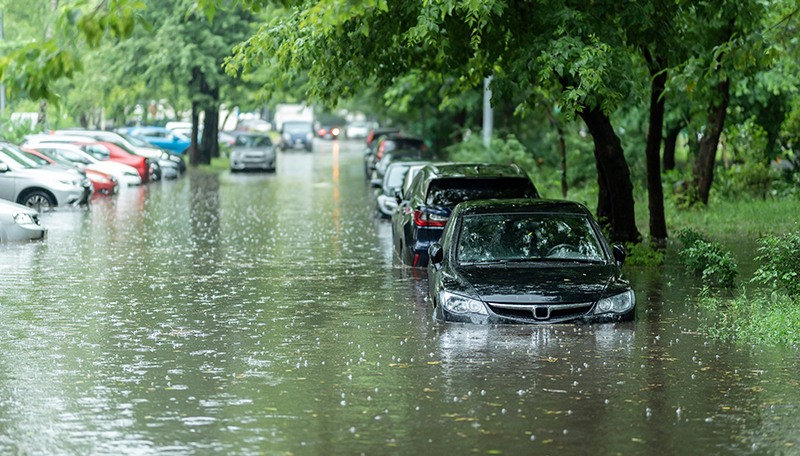Staying Safe from Floods
According to the National Weather Service, flooding is the second leading cause of weather-related fatalities in the U.S. (extreme heat is the first leading cause). On average, flooding claims the lives of 95 people each year and more than half of all flood-related deaths result from drownings when vehicles are caught in flood waters and then swept downstream. With hurricane season upon us, we want to provide information on the hazards of flooding and how to stay safe.
“Turn Around Don’t Drown” is a National Oceanic and Atmospheric Administration (NOAA) National Weather Service campaign that is used to educate people about the hazards of driving and/or walking through flood waters. People may believe that their cars will protect them from the elements, but that is not the case. Twelve inches of fast-moving water can carry away a small car, while 18-24 inches can carry away SUVs, vans, and trucks.
Remember that cars stall in moving water — leaving you stranded — and if there is water pressure and current against your car door, you won’t be able to open it to escape. Lower your car window. The time estimate for this fluctuates but imagine that you have only 30 precious seconds to accomplish this.
For more critical information on how to survive a flash flood in your car, go to: https://blog.americansafetycouncil.com/how-to-survive-a.../
Below are tips on preparing your home for a flood:
- Make sure you secure or protect any hazards in your home before the flood strikes
- Be prepared to turn off electrical power when there is standing water, fallen power lines, or before you evacuate. Turn off gas and water supplies before you evacuate. Secure structurally unstable building materials
- Buy a fire extinguisher if you don’t already have one. Make sure your family knows where it is and how to use it
- Buy and install sump pumps with back-up power
- Have a licensed electrician raise electric components (switches, sockets, circuit breakers and wiring) at least 12″ above your home’s projected flood elevation
- For drains, toilets, and other sewer connections, install backflow valves or plugs to prevent floodwaters from entering
- Anchor fuel tanks which can contaminate your basement if torn free. An unanchored tank outside can be swept downstream and damage other houses
If you are under a flood watch or warning:
- Gather the emergency supplies you previously stocked in your home and stay tuned to local radio or television station for updates
- Turn off all utilities at the main power switch and close the main gas valve if evacuation appears necessary
- Have your immunization records handy or be aware of your last tetanus shot, in case you should receive a puncture wound or a wound becomes contaminated during or after the flood
- Prepare an emergency water supply. Store at least 1 gallon of water per day for each person and each pet. Store at least a 3-day supply
- Bring outdoor possessions, such as lawn furniture, grills and trash cans inside or tie them down securely
For more information on staying safe from floods, visit: https://www.cdc.gov/disasters/floods/readiness.html
Credit: CDC and the American Safety Council
Learn more about HazTek Safety & OSHA Training.
